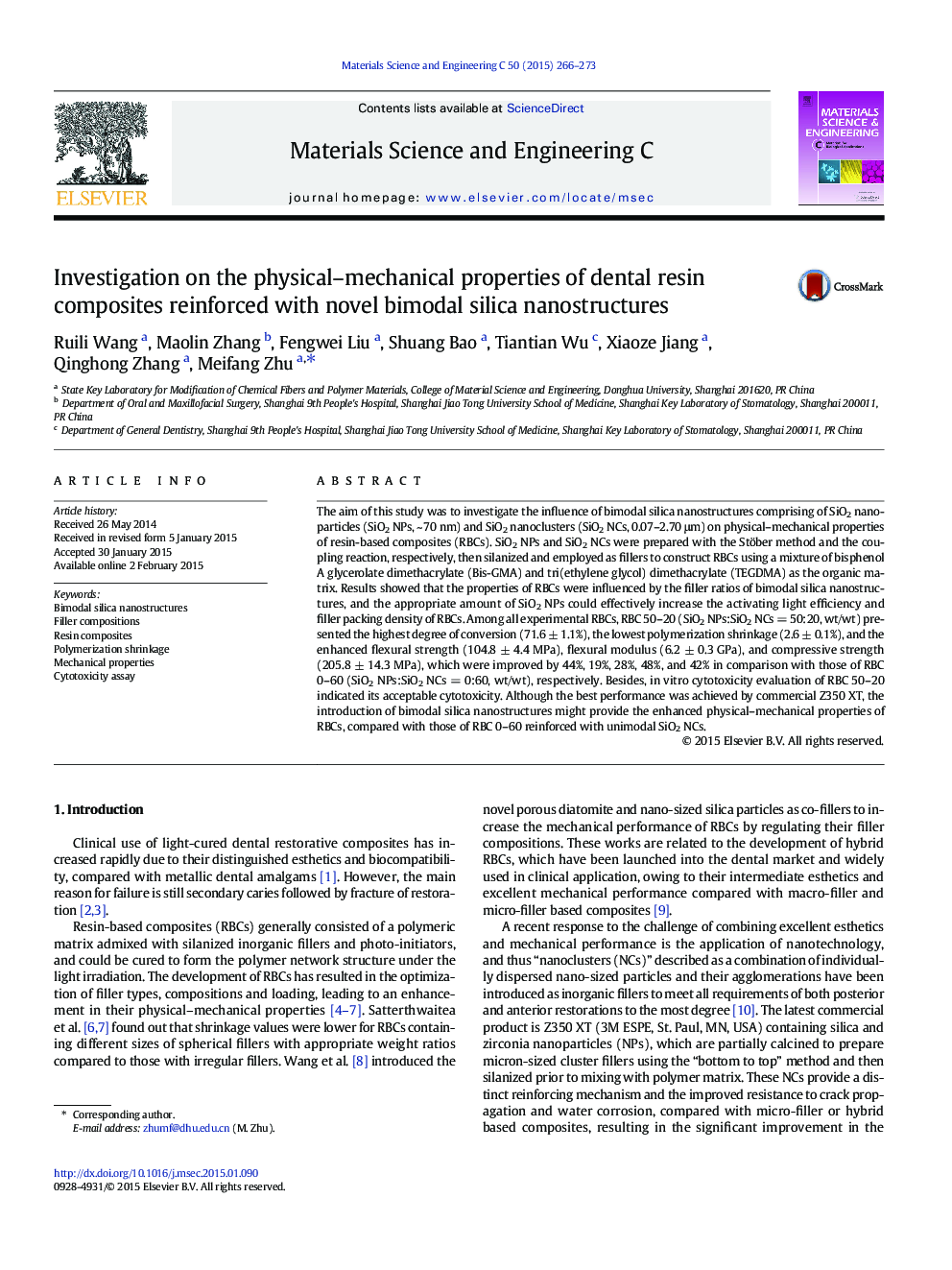| Article ID | Journal | Published Year | Pages | File Type |
|---|---|---|---|---|
| 7869728 | Materials Science and Engineering: C | 2015 | 8 Pages |
Abstract
The results of degree of conversion (a), and polymerization shrinkage (b) of representative RBC 0-60 (SiO2 NPs:SiO2 NCs = 0:60, wt/wt), RBC 50-20 (SiO2 NPs:SiO2 NCs = 50:20, wt/wt), commercial Esthet-X and Z350 XT were presented in the graphical abstract (*p < 0.01, compared with RBC 0-60; (â) p > 0.01, compared with Esthet-X; (+) p < 0.01, compared with Esthet-X; #p > 0.01, compared with Z350 XT). It could be observed that the employment of bimodal silica nanostructures consisting of SiO2 nanoparticles (SiO2 NPs) and SiO2 nanoclusters (SiO2 NCs) was a facile and effective gateway to design resin-based composites (RBCs) with enhanced physical-mechanical properties, especially for RBC 50-20 with the improved degree of conversion and the reduced polymerization shrinkage, compared with those of RBC 0-60 reinforced with SiO2 NCs alone, which was comparable with commercial Esthet-X and Z350 XT.
Related Topics
Physical Sciences and Engineering
Materials Science
Biomaterials
Authors
Ruili Wang, Maolin Zhang, Fengwei Liu, Shuang Bao, Tiantian Wu, Xiaoze Jiang, Qinghong Zhang, Meifang Zhu,
